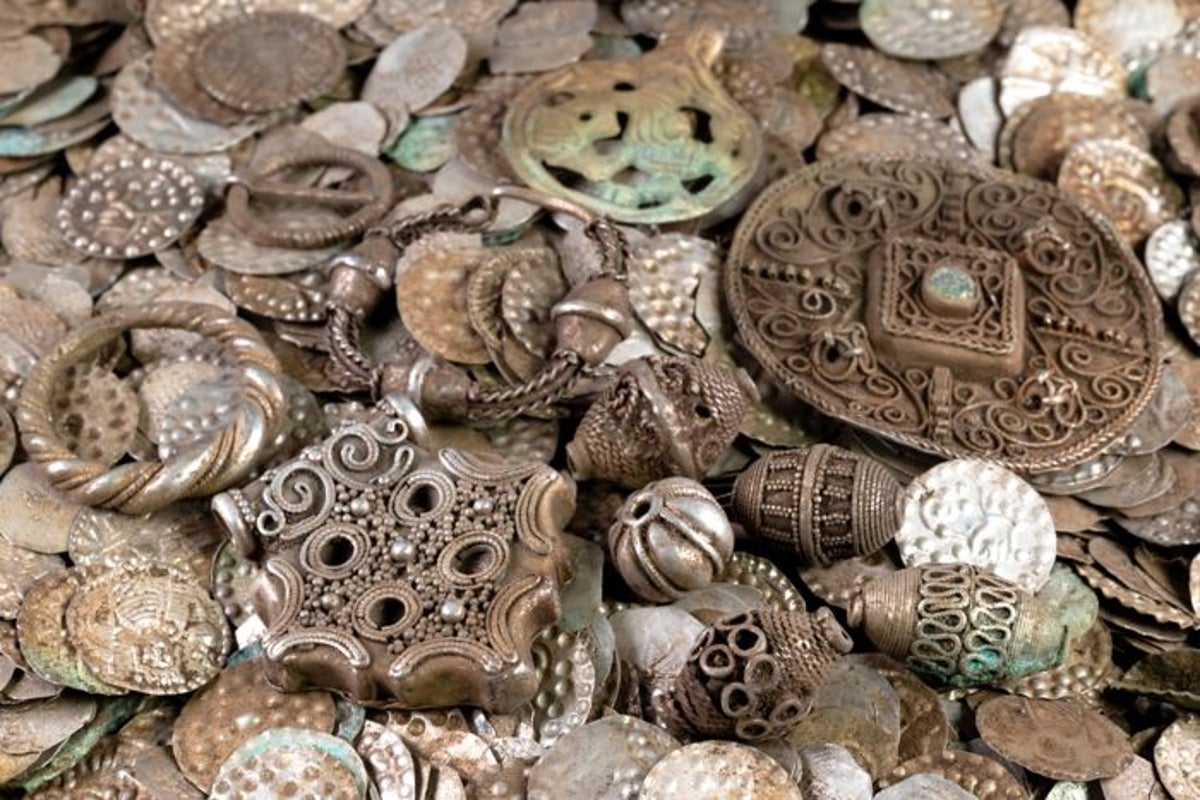
An angler in Sweden has uncovered an extraordinary medieval cauldron of historic jewellery and around 20,000 coins while digging for worms.
The lucky fisherman recovered the cauldron while searching for bait in Stockholm County, according to a translated statement from the area’s administrative board. It is believed to be one of the biggest silver hoards from the Middle Ages ever found in Sweden.
Stockholm County authorities described the haul of decorated coins and ornate jewellery dug up near the “private individual’s” summer cottage as an “unusually large and well-preserved” find weighing around 6kg.
Incredible pictures show the ornate pieces in extraordinarily good condition, although experts said the metal cauldron had degraded. Archaeologists are now working to examine the collection and date the pieces.
Sofia Andersson, an antiquarian at the County Administrative Board of Stockholm, said the discovery is “one of the largest silver hoards from the early Middle Ages ever found in Sweden”.
“We don’t yet know exactly how many coins there are, but I believe it could be up to 20,000,” she continued.
“Most of the objects are well-preserved, though unfortunately, the copper cauldron that contained them is not.”
Some of the coins bear inscriptions of King Knut Eriksson, who ruled Sweden between 1173 and 1195. He is known for organising the Swedish currency system and establishing a fortress on the site of Stockholm.
Other coins are inscribed with images of churches and the image of a bishop, which is believed to have been made on behalf of a medieval clergyman.
“During the Middle Ages, so-called bishop’s coins were minted in parts of Europe – coins produced on behalf of a bishop,” the statement said. “The hoard contains several such coins depicting a bishop holding a crozier in his right hand.”
The release added, “The County Administrative Board will also report the find to the Swedish National Heritage Board, which will decide whether the state will redeem the treasure – that is, compensate the finder.”
She added the finder had done “exactly the right thing” by handing the treasures in: “According to the Cultural Environment Act, anyone who finds an ancient object made of silver or a hoard is required to offer it to the state for redemption in exchange for payment.”
